Finite Volume Flow Simulations on Arbitrary Domains
Jeremy D. Wendt*, William Baxter†, Ipek Oguz*, Ming C. Lin*
*Department of Computer Science, University of North Carolina at Chapel Hill
†OLM Digital, Inc.
Abstract:
We present a novel method for solving the incompressible Navier-Stokes equations that more accurately handles arbitrary boundary conditions and sharp geometric features in the fluid domain. It uses a space filling tetrahedral mesh, which can be created using many well known methods, to represent the fluid domain. Examples of the method's strengths are illustrated by free surface fluid simulations and smoke simulations of flows around objects with complex geometry.
Paper:
Full text (preprint): PDF (6.5 MB)
Video: MPEG (12.1 MB)
Examples:
The following are examples of our system. The proposed technique works for 2D, 3D fluids with or without a free surface.
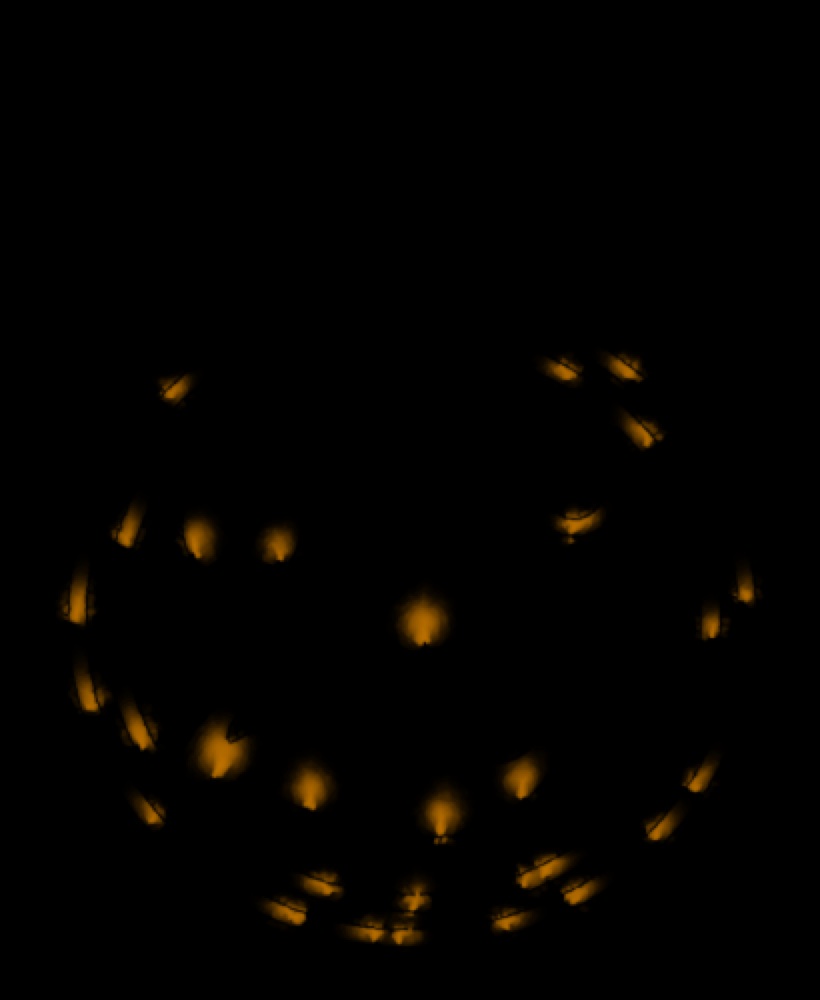



In this simulation, 2D smoke is controlled completely and easily using our thin boundary conditions. A semi-permeable membrane is simulated by passing a small percentage of the smoke difference across the boundary at each time step causing the smoke to "bleed". This simulation sequence appeared in the SIGGRAPH 2005 Animation Festival.
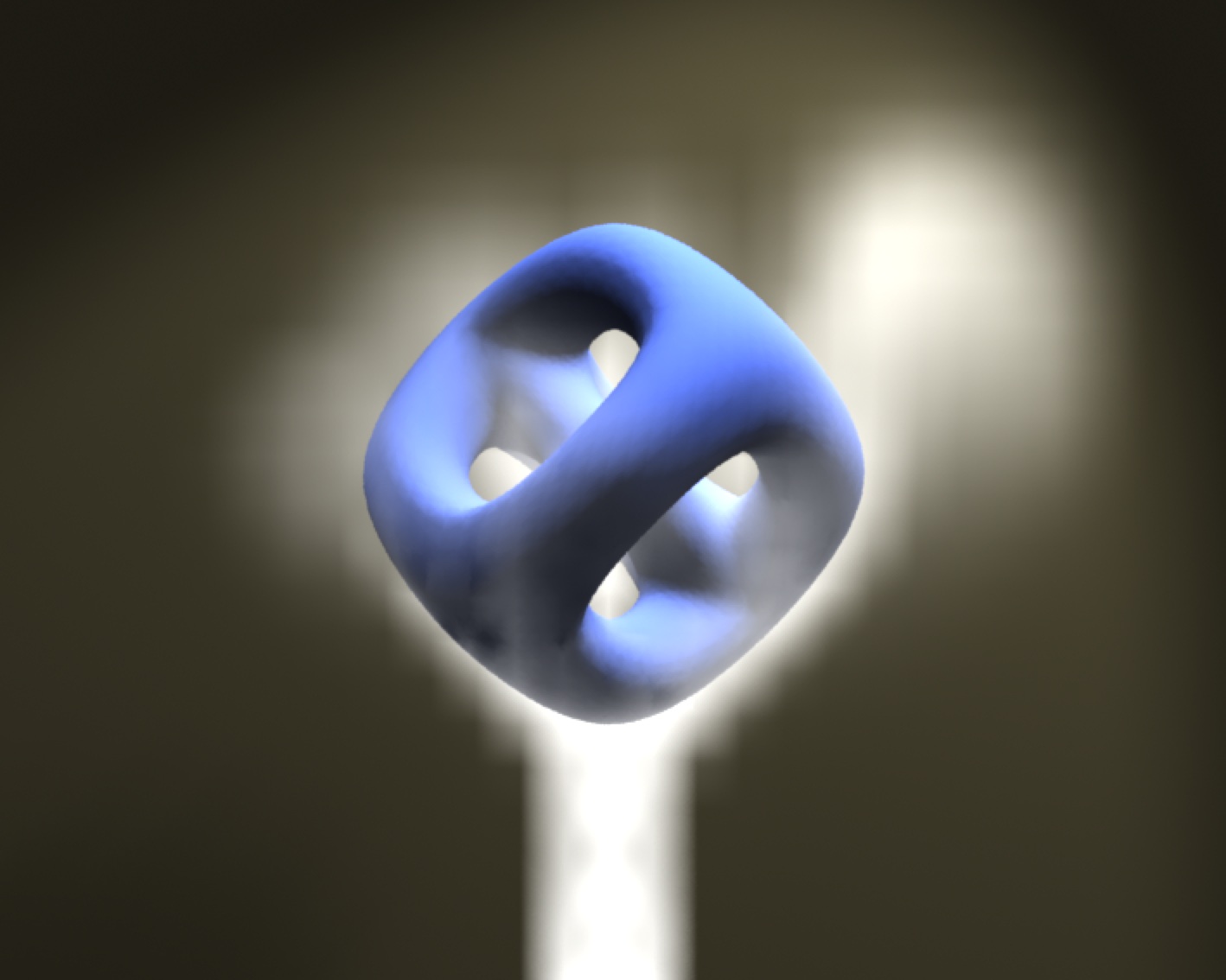
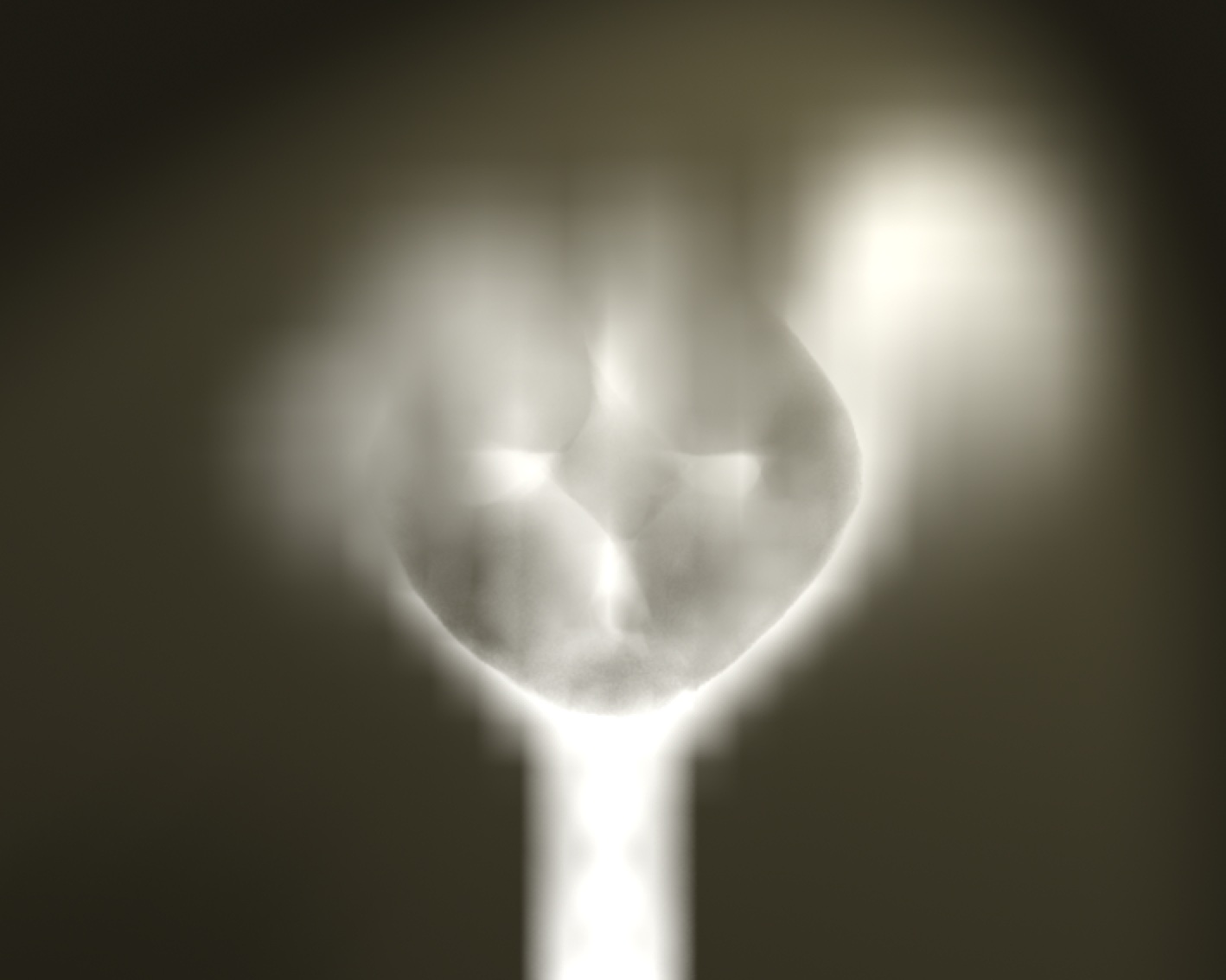
Here we see 3D smoke interacting with novel boundary conditions. The second image has the obstacle removed from the rendering. This shows how cleanly our simulation is able to approximate curved boundaries, as well as holes, even with relatively coarse resolutions.
We would like to thank Carlo Sequin of University of California, Berkeley for sharing the sculpture model employed in this simulation.
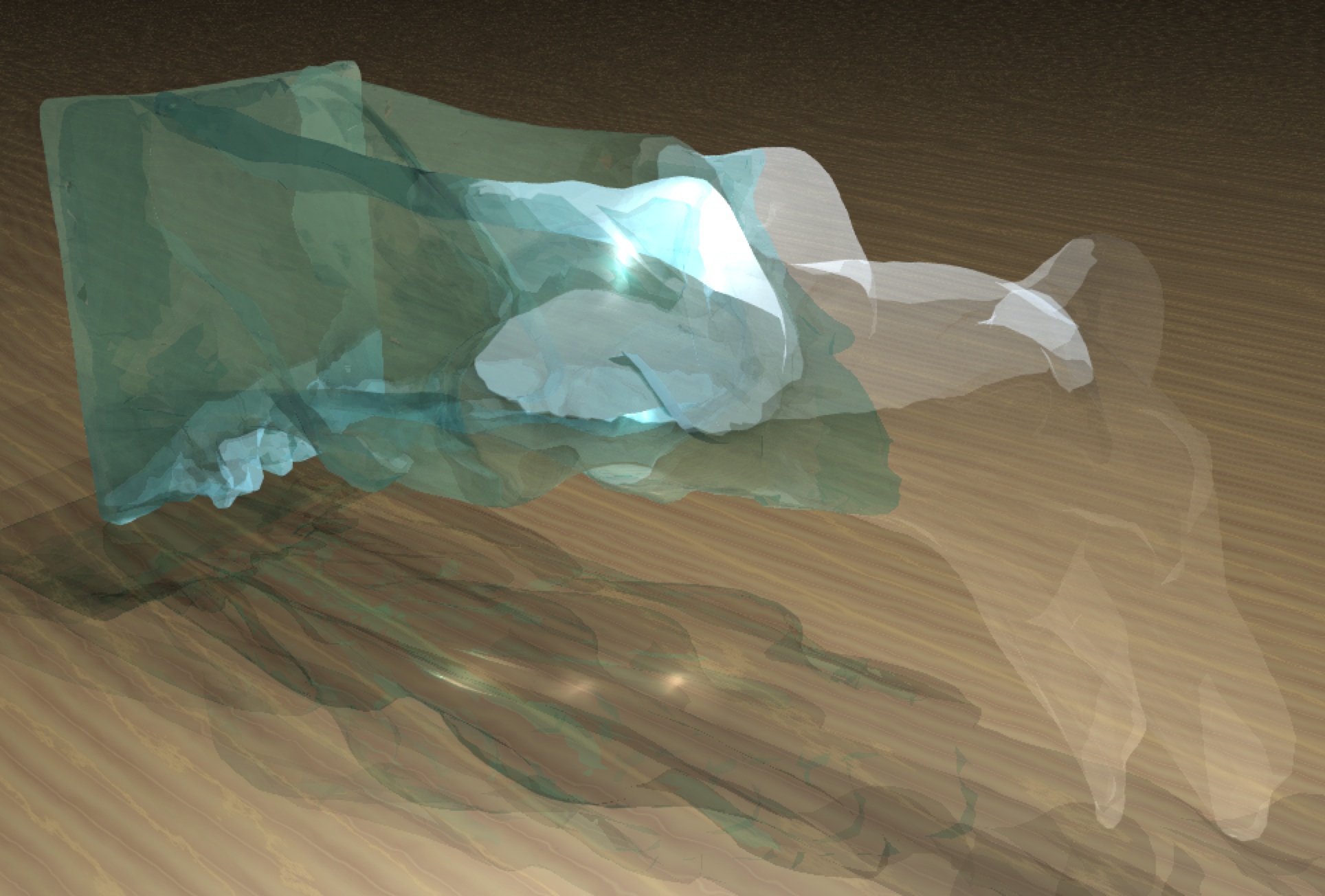
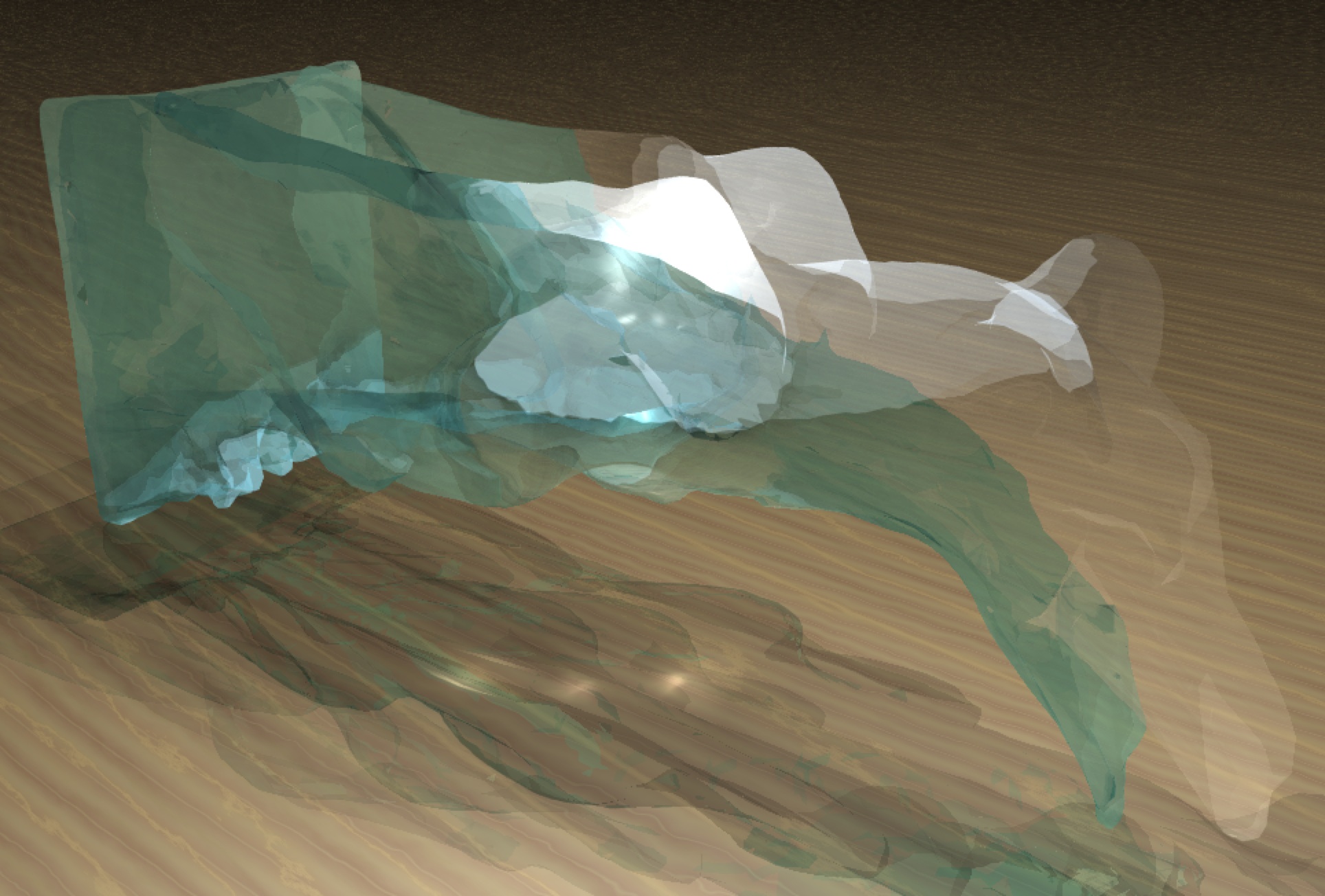
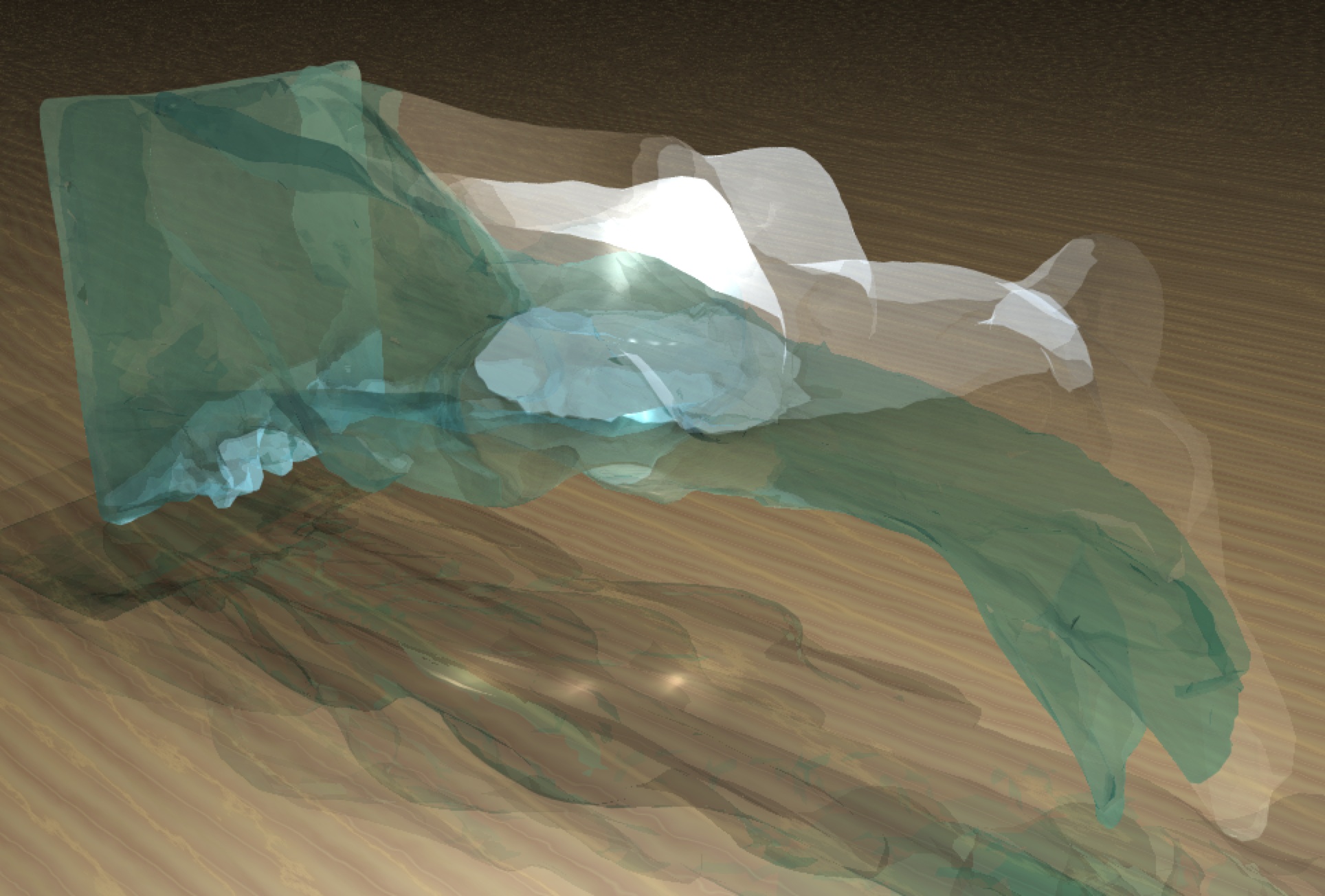
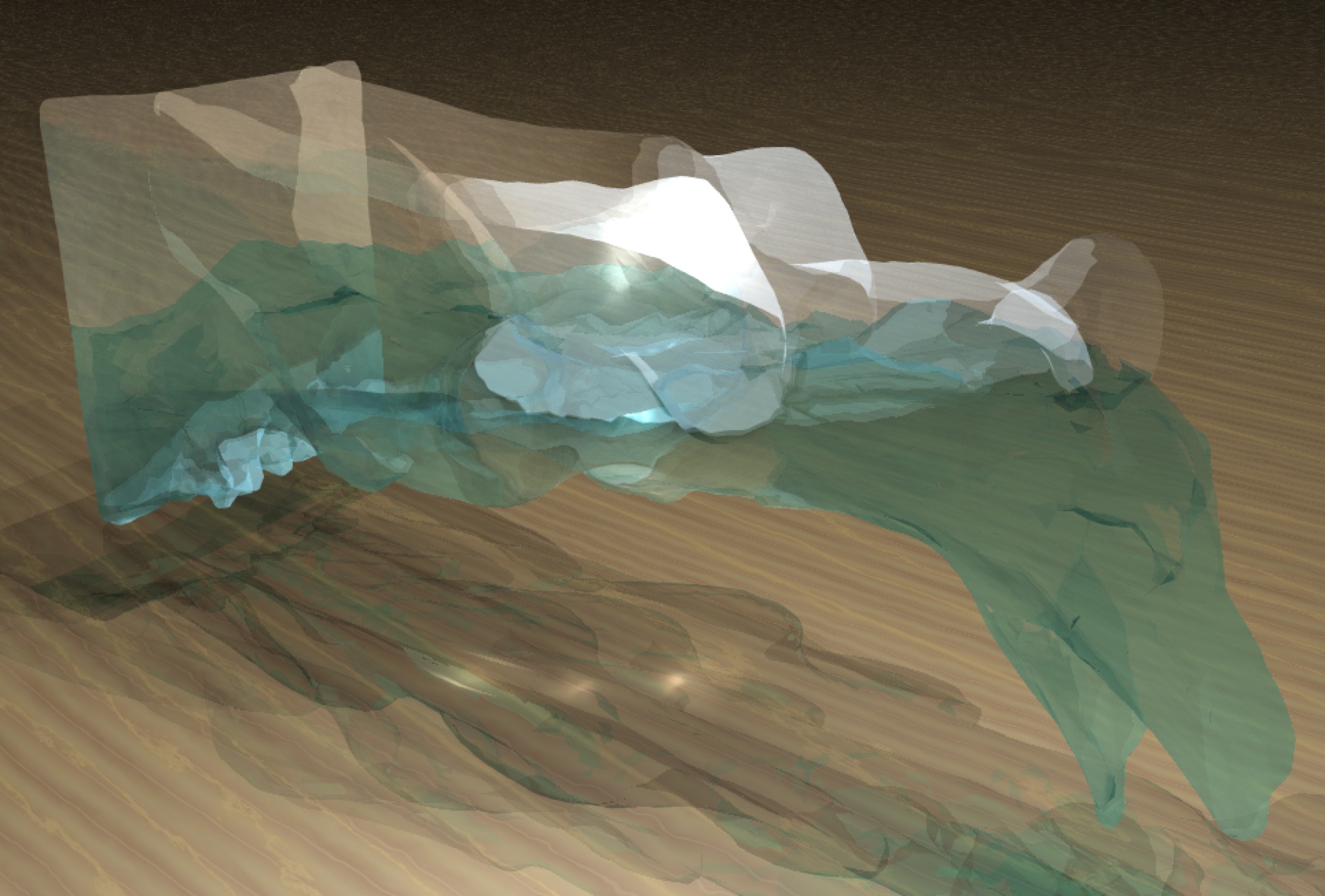
This sequence of images taken from our simulation shows how our system can easily handle complex domains for fluid simulations. It also shows how we are able to achieve convincing results with low resolution: 50,000 tetrahedra, roughly equivalent to a 37x37x37 resolution cube.
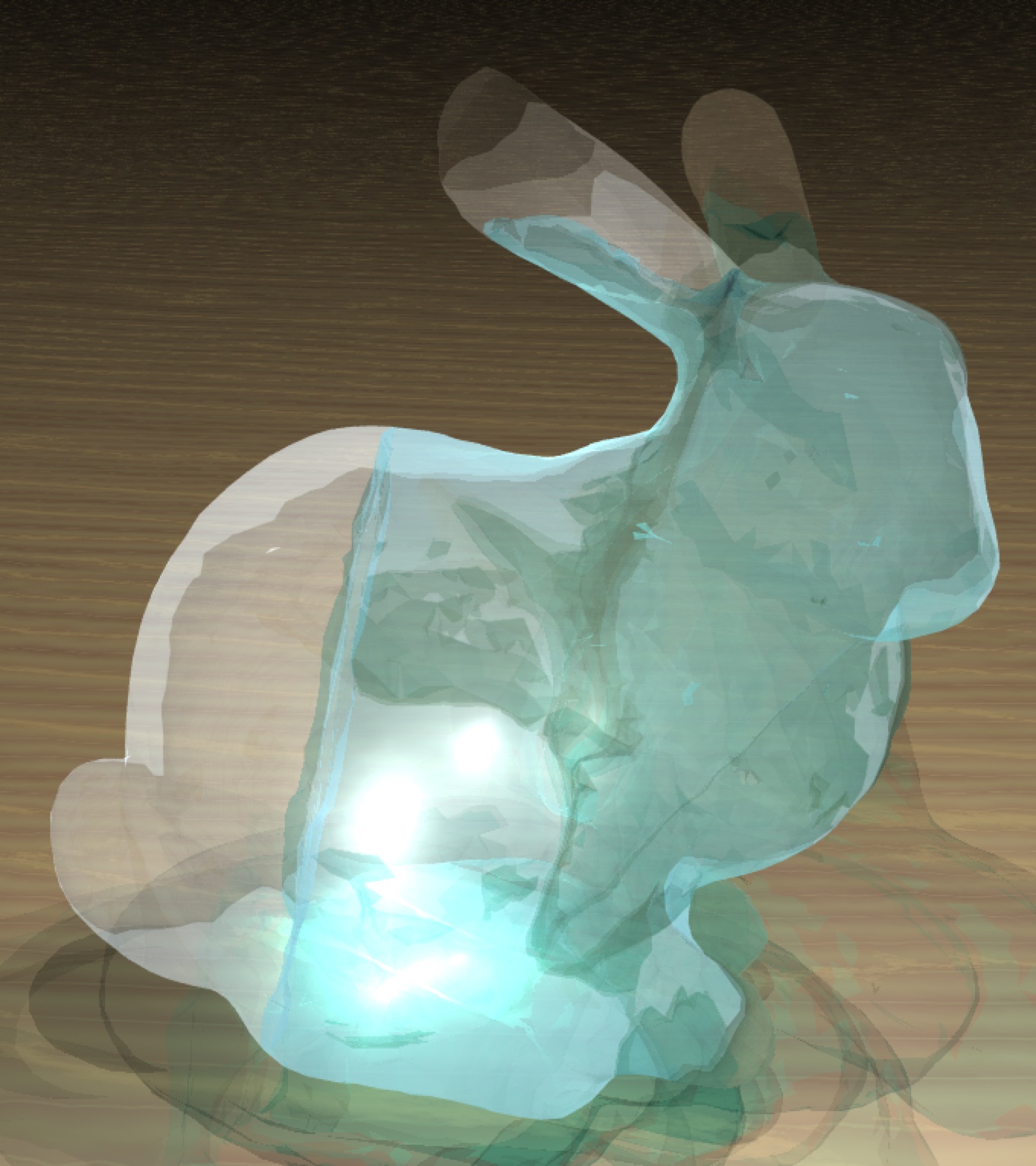


Similar to the above simulation. Note how the fluid easily flows up the hind parts of the Stanford bunny model to create a wave.
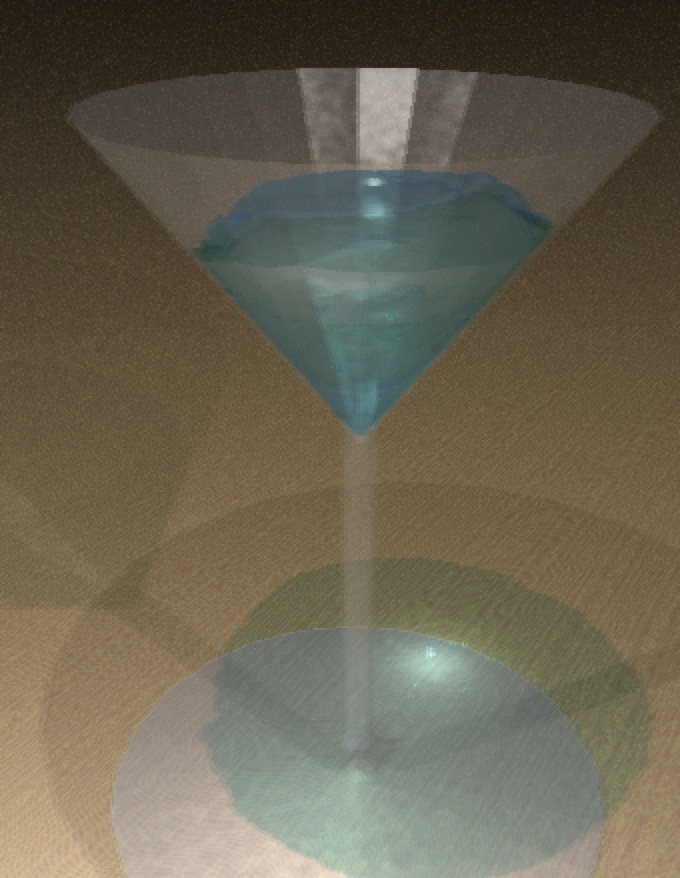
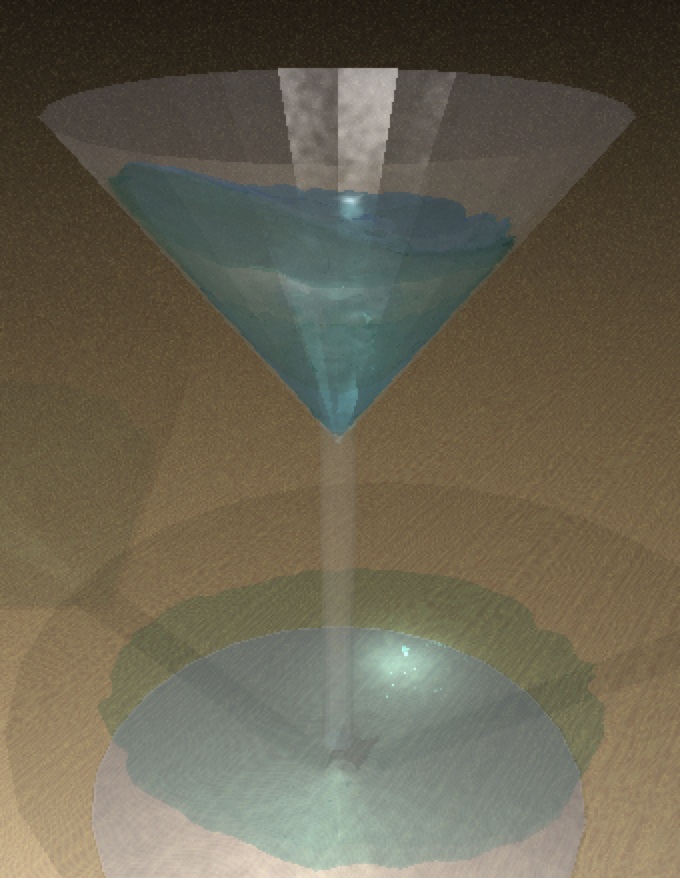
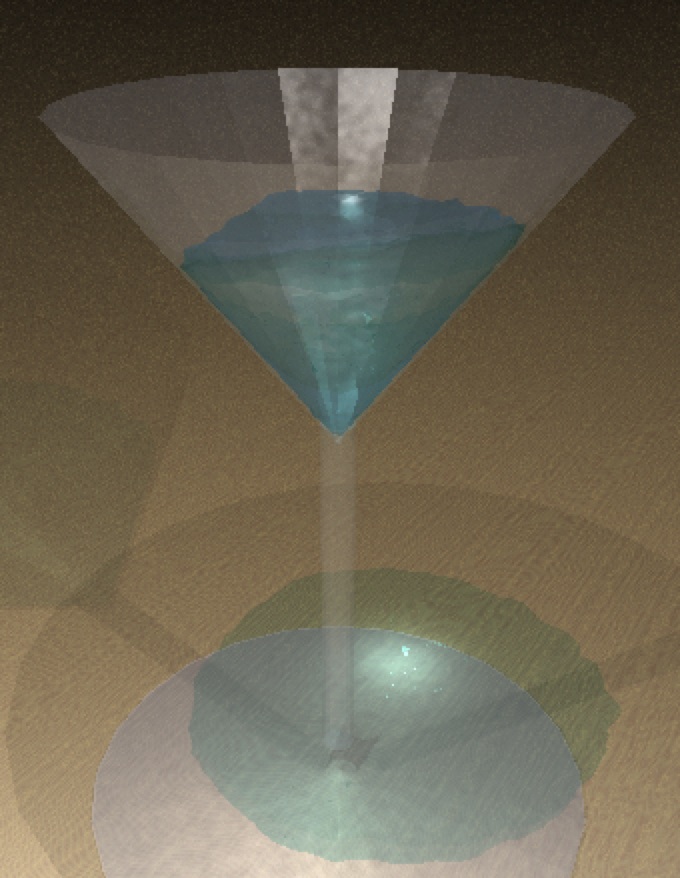
In this demonstration, we show a "real world case" requiring good boundary conditions for smooth, non-axis-aligned boundaries as well as a sharp feature. The simulation begins with the cup pushed to the left, followed by an abrupt stop. The simulation continues as the water splashes back and forth in the cup.
Research Sponsors:
Intel Corporation
National Science Foundation
Office of Naval Research
U.S. Army Research Office
This material is presented to ensure timely dissemination of scholarly and technical work. Copyright and all rights therein are retained by authors or by other copyright holders. All persons copying this information are expected to adhere to the terms and constraints invoked by each author's copyright. In most cases, these works may not be reposted without the explicit permission of the copyright holder.